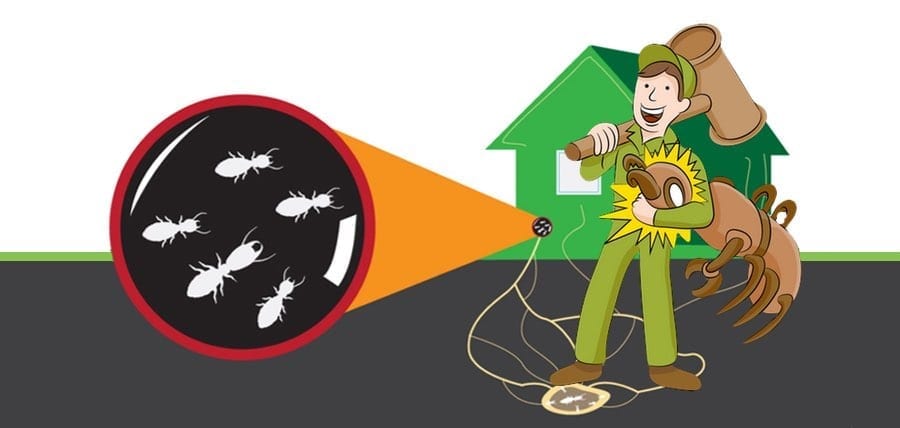How to Prepare for Termite Season and Steps You Should Take
Spring is mating season for termites. As soon as the warm season begins, and the air becomes moist, they grow wings and take to the air to mate with other termites from other colonies. This is called swarming. Then, they return underground to start new colonies. While termites swarm in spring, they are active throughout the year — quietly eating your walls, floors, and furniture. If you see signs of termites, don’t wait until you see a swarm. Take preventive actions before the swarming begins.
How to recognize termites?
During the mating season, it is easy to mistake termites for ants because they are similar in size and some species of ants also grow wings and fly. So, what do termites look like? Here are four ways to distinguish them. A termite’s waist is straight; an ant’s waist is pinched. A termite’s antennae are straight; an ant’s antennae are bent. A termite’s wings are of the same length; an ant’s wings are of different lengths. Termites shed their wings while swarming; ants do not.
Another question you may have in mind, do termites bite? Termites are not known to bite people although they can. They sometimes also attack other insects, but they do not bite people unless in self-defense, such as when you are handling them.
Are all termites destructive?
All species of termites can cause damages to your property. But, there are some that are more destructive. The three most invasive species of termites in the United States are the Western subterranean (found along the West Coast and as far inland as Nevada), the Eastern subterranean (found along the East Coast and as far inland as Utah) and the Formosan subterranean (found along the Gulf Coast, Louisiana, and Mississippi).
How to prevent a termite infestation?
Don’t wait until the termite’s swarm. It might be too late by then. Exterminate them before they start new colonies. Here are some tips on how to prepare for termite season.
- Repair water leakage to eliminate moisture: Termites thrive in moisture. If there are any water pipes, faucets, and AC units that are leaking, repair them before it starts to rain.
- Replace broken roof tiles and rotted shingles: Broken tiles and rotting shingles accumulate moisture that attracts termites. Check for broken tiles and rotting shingles in your roof and replace them with new tiles.
- Replace loose mortars and weather stripping: Loose mortars and weather stripping around basement foundations and windows collect moisture and provide a home for termites. Check for loose pieces and replace them with new ones.
- More firewood to a safe distance: Firewood provides a fertile ground for termites. If you have stored firewood near your house, then move it at least 20 feet away.
- Divert rainwater away from your house: Rainwater can make walls, floors, and basements wet and moist, creating an ideal environment for termites. Divert the water away from your house by installing gutters, downspouts, and splash blocks.
- Have your property inspected for termites: Before the termites begin to swarm, have your property inspected by professional pest control contractors and request an effective termite treatment plan.
When it comes to fighting termite infestation, prevention is better than a cure. Once you have a serious infestation, termite treatment cost can set you back by as much as $2,500. So, start preparing for termite season before it’s too late.
At NJ Pest Control located in Morristown, NJ we provide pest control services for both residential and commercial. We are committed to environmentally friendly and effective pest control. We can help you with termite season pest inspection, preparation, damage and more. Give us a call at 877-465-7378, email us at customerservice@4njpest.com or use our contact form.

